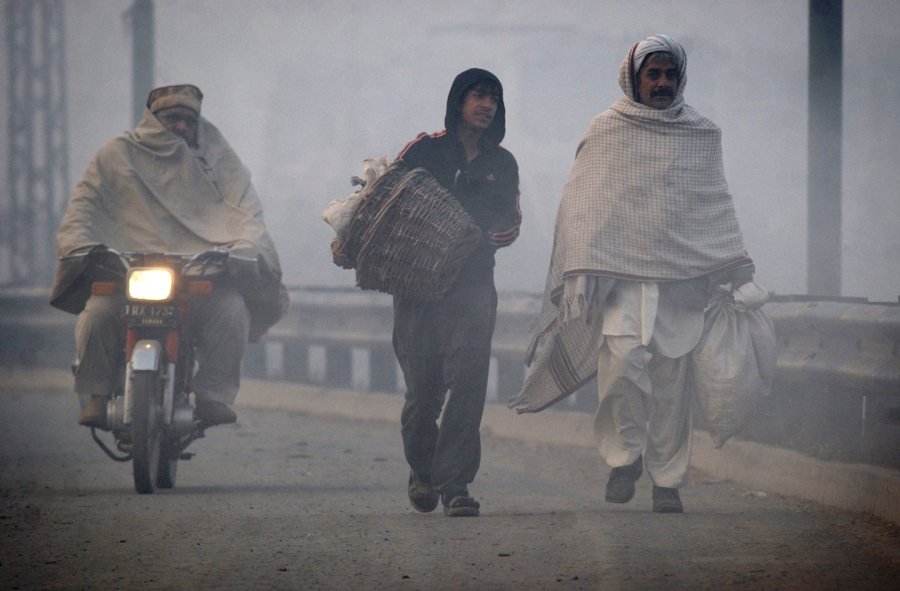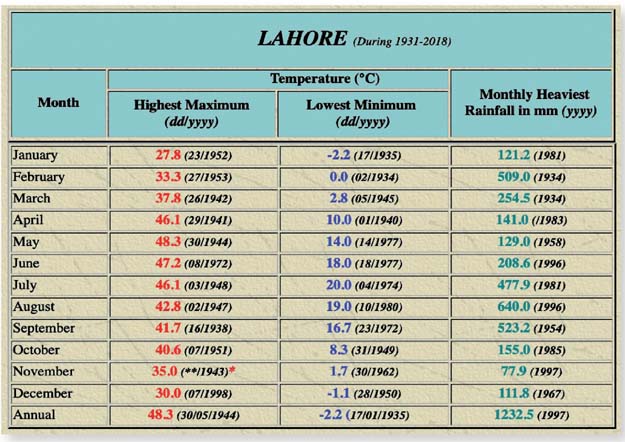
Extreme temperature statistics recorded by the Pakistan Meteorological Department (PMD) show that the provincial capital witnessed the coldest morning 85 years ago at -2.2°C on January 17, 1935. The mercury level dropped to -1.1°C on December 28, 1950, and touched freezing point (0°C) on February 2, 1934.
Official PMD data showed that shivering low temperature was recorded across Punjab as mercury hovered between -2 and 0°C in Murree. It stayed between 0-2°C in Rawalpindi, Jhelum, Attock and Chakwal, 1-3°C in Lahore, 2-4°C in Sargodha, 3-5°C in Dera Ghazi Khan, Multan and Faisalabad and 4-6°C in Sahiwal and Bahawalpur.
Speaking to The Express Tribune, Chief Meteorologist Mahr Sahibzad Khan highlighted that mainly cold and dry weather is expected in most parts of the country, while very cold in upper parts and north Balochistan.
Lahore among the ‘safest cities’ in the world
Rain and snowfall over hills are also expected at isolated places in northeast Punjab (Sialkot, Narowal, Gujranwala, Jhelum and Rawalpindi), Islamabad, Kashmir and Gilgit-Baltistan. Fog is likely to prevail in the plains of Punjab (Sialkot, Narowal, Gujranwala, Jhelum, Sargodha, Faisalabad, Jhang, Lahore, Multan, Bahawalpur, Rahim Yarkhan, Okara, Sahiwal) during night/morning hours.
Asian Development Bank’s report on the climate change profile of Pakistan highlights that Pakistan potentially faces a major climate change challenge. The annual mean temperature in Pakistan has increased by roughly half-degree Celsius.
 COURTESY: PMD
COURTESY: PMDThe number of heatwave days per year has increased nearly fivefold in the last 30 years. Annual precipitation has historically shown high variability but has slightly increased in the last 50 years.
By the end of this century, the annual mean temperature in Pakistan is expected to rise by 3°C to 5°C for a central global emissions scenario, while higher global emissions may yield rise of 4°C to 6°C degree Celsius.
Rain turns Lahore weather pleasant
It warns that under future climate change scenarios, Pakistan is expected to experience increased variability of river flows Demand for irrigation water may increase due to higher evaporation rates. Yields of wheat and basmati rice are expected to decline and may drive production northward, subject to water availability.
Water availability for hydropower generation may decline. Hotter temperatures are likely to increase energy demand due to increased air conditioning requirements. Warmer air and water temperatures may decrease the efficiency of nuclear and thermal power plant generation. Mortality due to extreme heat waves may increase. Urban drainage systems may be further stressed by high rainfall and flash floods. Sea level rise and storm surges may adversely affect coastal infrastructure and livelihoods. Approximately 6% of Pakistan’s federal budget during 2010–2014 comprised climate change-related expenditures, predominantly in energy and transport.
Published in The Express Tribune, January 17th, 2020.

1731916090-0/sabrina-(3)1731916090-0-165x106.webp)


1732020599-0/BeFunky-collage-(73)1732020599-0-165x106.webp)

1732012115-0/Untitled-design-(14)1732012115-0-270x192.webp)
1732002687-0/Untitled-design-(11)1732002687-0-270x192.webp)









COMMENTS (1)
Comments are moderated and generally will be posted if they are on-topic and not abusive.
For more information, please see our Comments FAQ